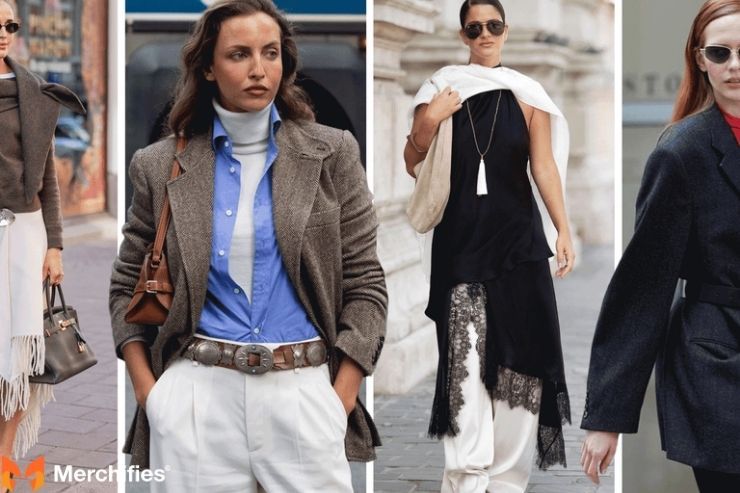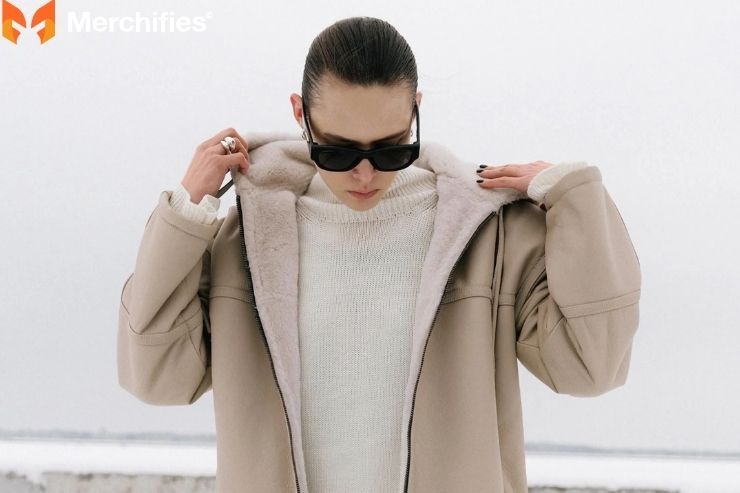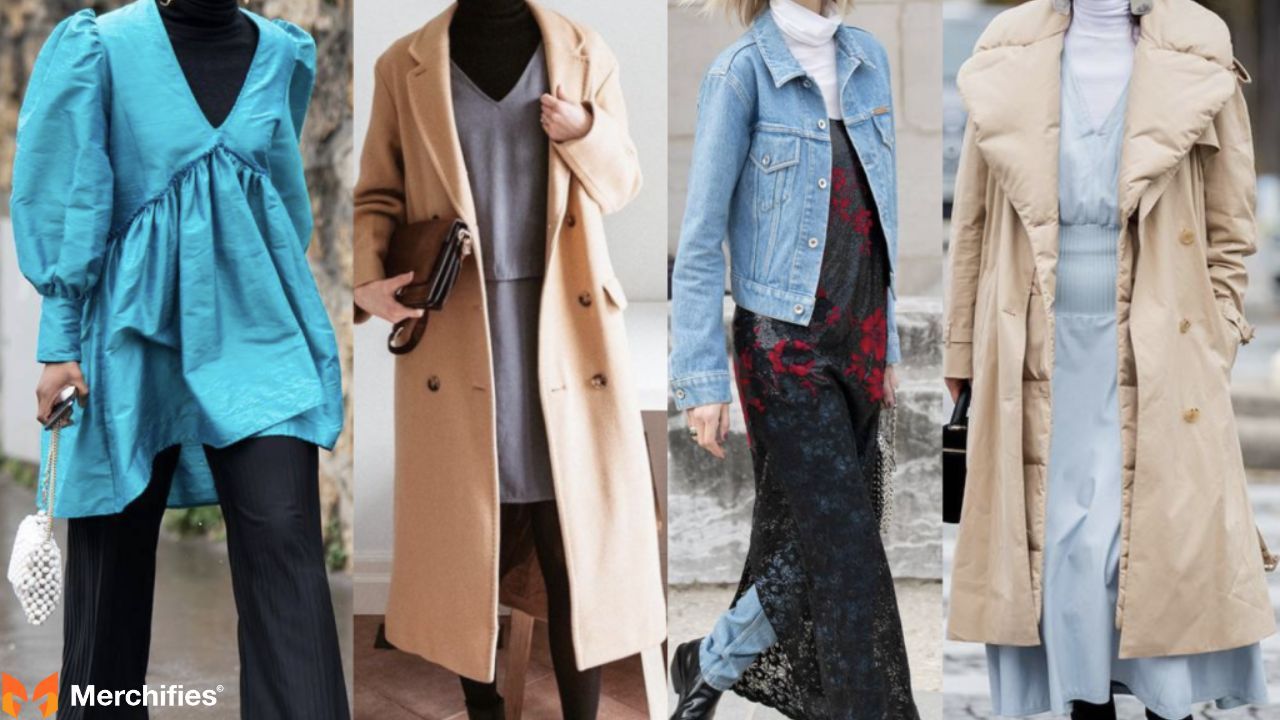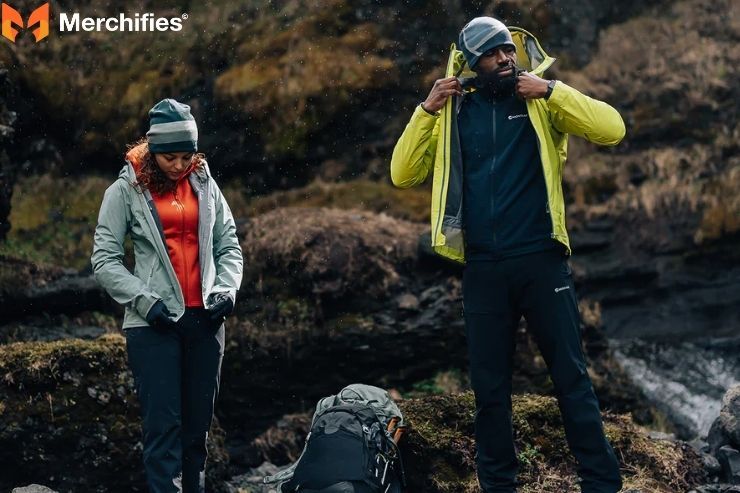How to Layer Clothes Like a Pro: The Ultimate Guide to Style & Warmth
Master the art of layering clothes with this ultimate guide to style and warmth. Learn how to combine textures, colors, and patterns while staying comfortable in any season. From casual outfits to professional looks, discover tips for layering base pieces, mid-layers, and outerwear to create versatile, chic, and practical ensembles that elevate your fashion game and keep you cozy.

Blog Post Contents
Are you looking to elevate your style, stay comfortable in changing weather, or simply maximize your existing wardrobe? Mastering the art of layering is your answer. It’s more than just piling on clothes; it's a thoughtful approach to combining different garments to create a cohesive, functional, and fashionable outfit. As a seasoned fashion and lifestyle expert, I've seen firsthand how effectively learning how to layer clothes for winter can transform anyone's daily dressing, offering both adaptable warmth and enhanced personal style.
The dual advantages of layering are clear: it dramatically enhances your personal style by adding depth and dimension, while also providing incredible adaptability to unpredictable weather and varying indoor/outdoor temperatures. Many people worry about looking bulky or feeling uncomfortable, but this guide will address those common concerns head-on. By the end of this article, you’ll not only understand the principles of layering outfits but also gain practical tips on how to master layering for any occasion, from a brisk morning commute to an elegant evening out. Get ready to learn the secrets to stylish layering and functional warmth that will unlock your wardrobe's full potential.
The Foundational Three-Layer System: Your Blueprint for Success
Layering, at its core, revolves around a simple yet effective three-layer system. This blueprint is your go-to strategy, whether you’re aiming for fashion-forward looks or seeking robust outdoor layering for warmth.
Why Layer? Beyond Just Staying Warm
While staying warm is often the immediate thought when considering layering, its benefits extend far beyond.
- Fashion Versatility: Layering breathes new life into your existing wardrobe. It allows you to create countless new looks and adds incredible depth and dimension to your outfits, making individual pieces work harder for you.
- Temperature Adaptability: Easily adjust to the shifts from a cool morning to a warm afternoon, or from a chilly outdoor environment to a heated indoor space. This adaptability is key for comfort.
- Comfort & Protection: Properly chosen layers can wick moisture away from your skin, provide crucial insulation against the cold, and shield you from wind and rain.
- Wardrobe Maximization: Learn how to layer clothes effectively, and you'll find you can get more mileage out of individual pieces, extending their use across different seasons and occasions.

Deconstructing the Essential Three Layers
Understanding each component of the three-layer system is crucial for successful layering.
1. The Base Layer: Your Second Skin
The base layer is your first line of defense, sitting directly against your skin.
- Purpose: Its primary role is to wick moisture away from your body, keeping you dry and comfortable, while also providing initial warmth.
- Fashion Examples: Think thin T-shirts, tank tops, camisoles, turtlenecks, or fitted long-sleeves. These can be visible or hidden, depending on your desired look.
- Functional Examples: For active pursuits, moisture-wicking fabrics like polyester or merino wool are critical. Avoid cotton for functional base layers, as it absorbs and holds moisture, making you feel cold and damp.
- Key Tip: Always opt for lightweight and well-fitting options for your base layer to prevent any unnecessary bulk when layering.
2. The Mid Layer: The Heart of Your Outfit (Insulation & Style)
This is arguably the most versatile layer, providing the bulk of your insulation and contributing significantly to your overall aesthetic.
- Purpose: The mid layer's main job is to trap air, providing warmth and acting as the primary source of insulation. Stylistically, it adds significant visual interest.
- Fashion Examples: Sweaters, cardigans, classic button-down shirts, elegant blouses, chic vests, or even light blazers and over-dresses. This is where your personal style truly shines.
- Functional Examples: Materials like fleece, down (for lightweight warmth), or thicker wool are excellent choices for trapping body heat.
- Key Tip: This layer is where you can truly express your personal style through your choice of color, texture, and pattern. Don't be afraid to experiment here.
3. The Outer Layer: Your Protective Statement
The final layer is your shield against the elements and completes your overall look, making a powerful statement.
- Purpose: It protects you from external factors like wind, rain, and extreme cold, while also defining the silhouette of your layered outfit.
- Fashion Examples: Stylish coats (trench, pea, wool), blazers, rugged denim jackets, or sleek leather jackets. These pieces are often chosen for their aesthetic appeal.
- Functional Examples: For serious protection, waterproof/windproof shells, insulated parkas, or heavy-duty winter coats are essential.
- Key Tip: When choosing your outer layer, ensure it's spacious enough to comfortably accommodate all the layers beneath without feeling tight, restricting movement, or creating unwanted bulk when layering.

Mastering the Art of Stylish Layering (Fashion-Focused Insights)
Beyond the functional aspects, layering is a powerful tool for fashion expression. It’s about creating depth, visual interest, and a cohesive look.
Play with Texture and Material Mixes
One of the easiest ways to achieve sophisticated layering is by combining different fabric textures. This creates dynamic visual depth and prevents outfits from looking flat. For example, pair a rough knit sweater with a smooth silk blouse, or combine rugged denim with soft jersey. According to Mason Ellis Grant, "Mixing textures isn't just a trend; it's a fundamental principle for adding dimension and avoiding a monochromatic, flat appearance. Think about a wool blazer over a satin camisole – the contrast is captivating."
Strategic Use of Color & Pattern
Color and pattern play a huge role in successful stylish layering.
- Monochromatic Magic: Layering different shades of the same color creates a sophisticated, elongating, and effortlessly chic effect.
- Contrast & Pop: Introduce a single contrasting color or a subtle pattern in one of your mid-layers to break up the look and add a focal point.
- Neutral Foundations: Starting with neutral base layers like black, white, grey, navy, or beige makes it incredibly easy to build upon with more vibrant or patterned pieces.
The Critical Role of Fit and Proportion
To avoid bulk when layering, fit and proportion are paramount.
- Avoid Bulk: Always layer thinner, more fitted items underneath thicker, looser ones. This creates a streamlined silhouette.
- Mix Silhouettes: Balance is key. Combine fitted pieces, such as a snug turtleneck, with more oversized items, like a chunky cardigan or a relaxed blazer.
- Length Variation: Experiment with varying lengths of layers. A longer shirt peeking out from under a shorter sweater, for instance, creates flattering lines and visual interest.
- Comfort is Key: Above all, ensure each layer allows for comfortable movement. If it feels restrictive, it's probably not working.

Thoughtful Accessorizing to Complete the Look
Accessories are the finishing touches that elevate any layered outfit.
- Scarves & Hats: These aren't just for warmth; they add crucial color, texture, and a touch of personality. A chunky knit scarf can add warmth and a pop of color, while a stylish hat can tie the whole look together.
- Belts: When layering bulkier items, a belt can define the waist, creating a more flattering and streamlined silhouette. This is particularly useful for avoiding a shapeless look.
- Jewelry: Choose pieces that complement your layered ensemble without getting lost or overpowering it. Delicate necklaces can layer nicely, or a statement earring can draw the eye.
How to Layer Clothes for Women: Effortless Chic
For women, layering offers endless opportunities to express personal style while remaining comfortable. Start with a foundational camisole or a fine-knit top, then add a crisp button-down shirt, leaving it untucked or partially tucked for a relaxed vibe. A classic V-neck sweater over this adds warmth and texture. Finish with a tailored blazer for the office or a chic trench coat for urban exploration. Don't shy away from layering dresses over turtlenecks or thin long-sleeve tops for a modern, versatile look. Play with feminine blouses under cardigans, or even a vest over a fitted long-sleeve for added panache.
How to Layer Clothes for Men: Smart & Sophisticated
Men can achieve a sophisticated, put-together look by mastering layering. Begin with a high-quality undershirt or a plain T-shirt. Over this, a well-fitting button-down shirt is a classic choice. Introduce a mid-layer like a fine-gauge knit sweater, a cardigan, or even a denim shirt for a more casual appeal. A sport coat or a blazer works wonders as a fashion-forward outer layer, especially when paired with trousers or dark jeans. For colder weather, a wool overcoat or a structured peacoat completes the ensemble, providing both warmth and an undeniably sharp aesthetic. The key for men is often subtle differences in texture and shade for an understated elegance.

Layering for Warmth & Performance (Functional & Outdoor Focus)
When the goal is primarily warmth and protection, especially for outdoor layering, the functional aspects of fabrics and adaptability become paramount. This is where understanding materials truly shines.
Material Matters: Choosing Fabrics for Function
The right fabric choice is the cornerstone of effective layering for warmth.
- Base Layer: Prioritize moisture-wicking materials like synthetic polyester or natural merino wool. These fabrics pull sweat away from your skin, which is crucial for staying warm and preventing chilling. Avoid cotton for active pursuits, as it absorbs moisture and holds it against your skin, making you cold.
- Mid Layer: Focus on insulating materials that trap air to retain body heat. Fleece is a popular, affordable option, while down (goose or duck) offers superior warmth-to-weight ratio. Wool, especially merino or cashmere, provides excellent insulation even when damp.
- Outer Layer: Your protective statement needs to be weather-resistant. Look for waterproof, windproof, and breathable fabrics like Gore-Tex or similar technical shells for rain and wind. For extreme cold, heavily insulated parkas are essential.
Adapting Layers to Activity Level & Conditions
Effective functional layering is about smart adjustments based on your activity and the environment.
- "Be Bold, Start Cold": When you're exercising or engaging in strenuous activity outdoors, it's wise to dress so you're slightly cool at the start. Your body will generate heat quickly, and you'll soon warm up to a comfortable temperature. This prevents overheating and excessive sweating.
- Easy On/Off: Choose layers that can be easily added or removed. Zippers, snaps, and easily packable items are your best friends. This allows you to quickly regulate your body temperature as conditions or your exertion level changes.
- Consider Activity: For high-exertion activities like hiking, opt for lighter base and mid-layers that prioritize breathability and moisture-wicking. For static, cold-weather activities like ice fishing, heavier, more insulating layers are appropriate.
How to Layer Clothes for Winter: Battling the Chill
When winter bites, smart layering is your best defense. Start with a warm, moisture-wicking merino wool or synthetic thermal base layer. This is non-negotiable for serious cold. Your mid-layer should be a substantial insulator – a thick fleece jacket, a down vest, or a heavy wool sweater. Finally, your outer layer must be a waterproof and windproof shell, or an insulated parka, designed to fend off snow, sleet, and biting winds. Remember that hats, gloves, and warm socks are also critical components of a complete winter layering system. Protecting extremities significantly impacts overall body warmth.

Practical Tips & Common Layering Mistakes to Avoid
Even with the best intentions, layering can go wrong. Here’s how to ensure your efforts result in comfort and style.
Start with a Solid Foundation
Your base layer isn't just a piece of fabric; it's the foundation of your entire layered outfit. A comfortable, well-fitting, and appropriate base layer (moisture-wicking for active, soft cotton for casual warmth) sets the tone for everything that follows.
Build from Thin to Thick
This is a golden rule for layering. Progress gradually from your thinnest, most fitted layers to your thickest, loosest ones. This ensures freedom of movement and prevents that cumbersome, "stuffed" feeling.
Don't Be Afraid to Experiment
Fashion is about personal expression. Try different combinations, mix items you wouldn't normally, and find what truly works for your body type, style, and comfort. Sometimes, the most unexpected pairings create the most striking layering outfits.
Prioritize Comfort and Flexibility
No matter how stylish an outfit looks, if you can't move freely or feel comfortable, you won't enjoy wearing it. Always ensure each layer allows for full range of motion.
Common Pitfalls to Sidestep:
- Too Much Bulk: Over-layering with too many heavy, thick items is a common mistake that can make you look and feel cumbersome. Remember the thin-to-thick rule.
- Ill-Fitting Layers: Layers that are too tight will restrict movement and create unflattering bulges. Layers that are too baggy can look sloppy and compromise insulation by allowing cold air pockets.
- Wrong Materials: Using cotton for an active base layer in cold weather is a primary example. It will absorb sweat, making you cold and miserable.
- Overwhelming Patterns/Colors: Too many competing patterns or bright colors can look chaotic rather than chic. Stick to one or two focal points.

Conclusion: Embrace Your Layering Journey
Mastering how to layer clothes is truly a game-changer for your wardrobe, offering unparalleled versatility, comfort, and style. We've explored the foundational three-layer system, delved into the art of stylish layering for both men and women, and examined the functional aspects of layering for warmth and performance, especially in winter. From playing with textures to strategically choosing materials, you now have a comprehensive guide at your fingertips.